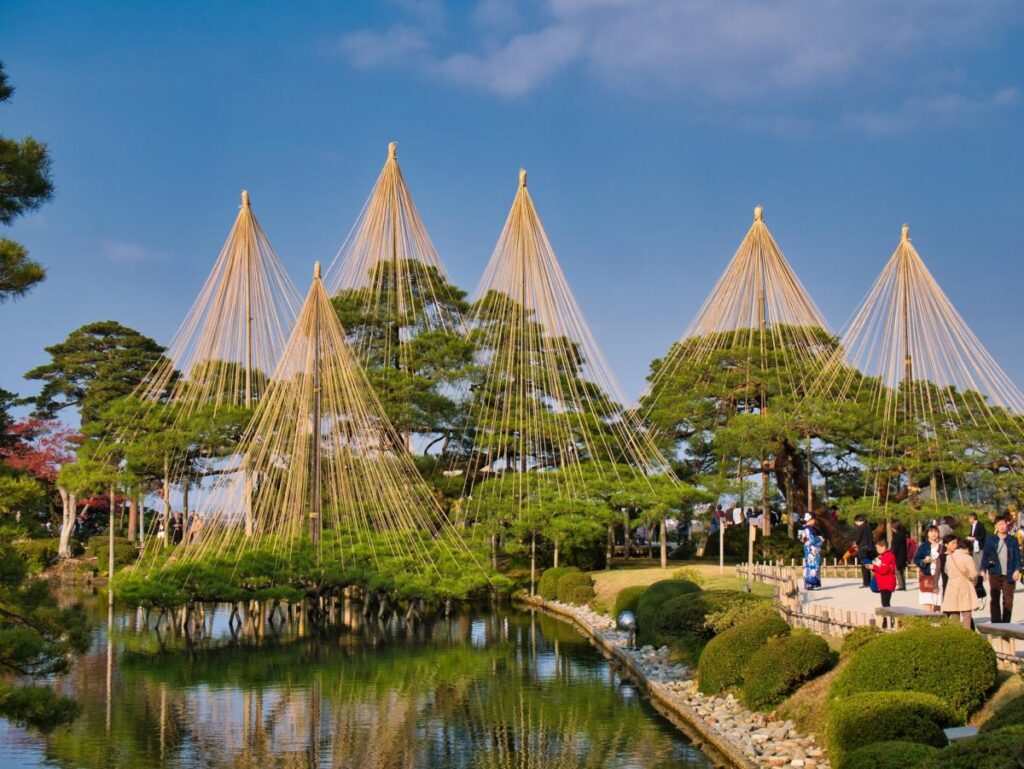Hokuriku, located in central Japan, is celebrated for its breathtaking landscapes, including majestic mountains and scenic bays. This region showcases a diversity of natural beauty that enriches its culinary offerings and nurtures centuries-old crafts such as wood carving. Connected by the Shinkansen bullet train, which links it directly to Tokyo, as well as rapid transit options to Kyoto and Osaka, Hokuriku is easily accessible for travelers. The region’s rich heritage and stunning vistas make it a worthwhile destination for anyone looking to experience the true essence of Japan.
The ideal time to visit Hokuriku varies by season, showcasing a dramatic transformation of the region throughout the year. Spring brings delicate cherry blossoms, making it a picturesque time to visit. Travelers can marvel at the Tateyama-Kurobe Alpine Route’s impressive snow corridor while indulging in fresh sushi aboard the Belle Montagnes et Mer train. Summer presents opportunities to escape humidity while hiking in elevated national parks and enjoying vibrant traditional festivals. Fall is characterized by a bountiful harvest with delicious chestnuts and persimmons while offering stunning sights of autumn foliage. In winter, avid skiers can revel in pristine powder at ski resorts and soak in hot springs, surrounded by a winter wonderland of snow-covered traditional gassho-zukuri houses.
Hokuriku comprises four prefectures: Fukui, Ishikawa, Toyama, and Niigata. Each area contributes its own unique character and attractions. Fukui offers coastal beauty at the Wakasa-Wan Quasi-National Park and historic sites like the Eihei-ji temple. Ishikawa, home to Kanazawa, is a cultural center boasting museums, samurai districts, and the iconic Kenroku-en garden. Toyama is known for its culinary heritage, including Michelin-rated restaurants and traditional wood-carving artistry. Finally, Niigata stands out for its ski resorts and sake breweries, gaining recognition for producing high-quality drinks and rice resulting in exquisite sake varieties.
The region also provides numerous accommodation options catering to different tastes and budgets. Staying at places like Rakudo-An or Hakujukan allows visitors to immerse themselves in local culture, from traditional folk crafts to unique temple experiences. Sadogashima’s historical inns, such as Hananoki, provide a blend of luxury and cultural tradition, emphasizing local gastronomy. Innovative culinary experiences abound in Hokuriku, emphasizing seasonal ingredients and traditional flavors. Signature dishes include the famed Echizen crab, Kanazawa oden hot pot, and the notable Toyama Black ramen. Each prefecture contributes to a diverse culinary landscape that showcases Hokuriku’s agricultural bounty.
Transportation throughout Hokuriku is efficient, primarily reliant on the Japan Rail (JR) network. The Shinkansen facilitates easy access from major cities such as Tokyo and Kyoto, with additional train routes leading to noteworthy sites in the region. Local buses bridge gaps to more remote locations, allowing exploration of hidden gems like Gokayama and Inami. For those who prefer fraught alternatives, ferries from Niigata make traveling to Sadogashima convenient, providing a unique perspective of the region’s rugged coastlines. Visitors can plan their travels accordingly to ensure they experience the best Hokuriku has to offer while staying connected to the vibrant culture of each area.
Travelers to Hokuriku can be mindful of sustainability in their journey. With visitor numbers significantly lower than in some of Japan’s more popular areas, choosing Hokuriku creates a positive impact by alleviating overtourism pressures. Supporting local businesses, participating in craft workshops, and engaging with community-driven experiences contribute to the preservation of traditions. While northern regions affected by the recent earthquake may require time to recover, tourists can play a critical role in aiding southern areas through their patronage and interest, thereby supporting the more inclusive growth of this stunning and rich cultural region.
Hokuriku invites exploration through its multifaceted seasons, cultural richness, and warm hospitality. From majestic mountains to culinary delights, this region provides a unique experience that reflects the heart of Japan. By visiting Hokuriku, travelers can enjoy its natural beauty and cultural treasures and contribute meaningfully to its communities, encouraging a sustainable and enriching travel experience for generations to come.

